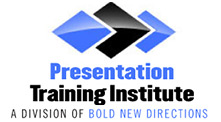📞 Call Now: 800.403.6598 Contact Us - Get Started Contact Us

No products in the cart.

7 Things You Need to do Before a Presentation

A presentation is more than just an opportunity to explain a position or idea; it’s a means to demonstrate the hard work and research you’ve invested into it. And when it comes to preparing for a presentation—any presentation—you need to remember that the way you deliver your presentation is just as important (perhaps even more so) than the actual content.
Yes, that’s right. What you say isn’t necessarily as important as how you say it .
Think back to the last really good presentation you heard. I mean, the one that had you thinking about it for days afterwards. What made it so compelling? Why did it motivate or inspire you?
I’ll tell you why: Because the speaker engaged you . That was no accident! He or she didn’t walk up to the podium and wing it.
How to Prepare for a Presentation?
There’s a ton of preparation that goes on behind the scenes of an amazing presentation. We know because it’s our business to teach you the fundamentals of public speaking. What you may not realize is the preparation stage goes further than just jotting down some notes and practising in front of a mirror. A stellar presentation takes a lot of time, a lot of energy, and… oh yes… a lot of practice. Here are seven key things you need to do before any presentation:
- Do Your Research —Regardless of whether or not you are an expert in your field, there is always something new to learn. Do a thorough investigation before plotting your presentation to see if there are any new developments that could be relevant to your subject or to your audience. And make sure you really know your material. It will eliminate the dreaded “umms” and “uhs” that we’ve all come to hate. It’s a sure sign you’re not as knowledgeable or prepared as you should be.
- Know Your Audience —No two presentations should ever be the same. I don’t care if it’s the 12th time this month that you’ve talked about the same subject. You may not have to start from scratch every time, but at least put the effort into finding out who’s going to be in your audience and tailor your presentation in a way that will appeal to them. The same jokes you told a business crowd at a breakfast meeting are probably going to fall flat with your daughter and her fellow third-graders on Career Day.
- Craft Your Notes —Here’s a good rule of thumb: If you can’t do your presentation without it being written down, you probably can’t do it at all. Don’t write a speech. Ever. Instead, craft notes to jog your memory on your speaking points. Glance at them periodically to keep you on track. Take those notes and practice with them every day until you don’t need them anymore. (But take them with you anyway… people tend to get forgetful in front of a crowd.)
- Practice Your Delivery —Your notes will help you prepare what you are going to say, but I’ve already told you what you say doesn’t keep a crowd engaged. So grab a video camera, your cell phone… anything with a video recording option and get in front of it. Record yourself delivering your presentation and give yourself an honest critique: Do you use effective body language? Do you walk around and interact with the crowd? How is your posture? If you can’t give yourself an honest critique, enlist a friend or family member to take a look and point out areas for improvement. Then practice, practice, practice.
- Dress For Success —As I mentioned before, every bit of a great presentation is intentional, including the speaker’s choice of clothing. Take special attention the next time you see someone speaking (usually a politician) who’s trying to appeal to blue-collar workers. Do you know what they’ll be wearing? A blue-collared shirt with their sleeves rolled up. Your attire should match the audience. Wearing a tuxedo to deliver a speech at a ground-breaking ceremony for a new chemical plant just doesn’t make sense.
- Get a Good Night’s Sleep —Make sure you look alert and refreshed by getting plenty of rest the night before a presentation. A drowsy mind is a forgetful mind. And the bags under your eyes won’t do you any good, either.
- Prepare Your Space —Arrive with enough time ahead of your presentation to properly prepare the space you’ll be using. Make sure your slides are in order and that any equipment you’ll be using is functioning properly to avoid embarrassing hiccups and delays during your presentation. Place your speaking notes in a logical spot and get yourself a glass of water. Spend a few quiet minutes mentally preparing.
Be the speaker that has inspired you. Think back to the speeches you’ve heard or the people who’ve appealed to you and strive to make that same connection with your audience. Preparation is key. There’s no such thing as an off-the-cuff winning presentation, so invest some time into yourself and your audience. And of course, we’re always here to help when you need to spend a little extra time brushing up on your skills.
Have you ever had a presentation or speech that you were completely unprepared for? Let us know in the comment section below, and if this topic has helped you, share it on social media to help those in your circles as well!
10 Comments
I need to spend more time preparing for presentations than I do. I used to prepare more but i think I;m getting lazy the older I get.
I love how you touched on knowing your audience. A lot of people tend to forget this and in turn, end up being forgettable. You want to really connect with who you are speaking to in order to be remembered and thought about after the presentation is over. I have talked to many people who will touch on all the point mentioned but tuning yourself to your audience.
I agree with John. I have gotten a little lazy and probably a lot boring because I’ve done my presentation so many times. I need to revisit what prep looks like. Thanks
I’ve tried ‘winging it’ only to discover I looked pretty foolish. Preparation is the key.
Off-the-cuff is definitely not good. I think we’ve all tried that strategy (and failed).
I liked the point about dressing for success. People put so much thought into what they’re going to say. They don’t think about what their outfit says.
People don’t realize just how much of a benefit a good night’s sleep can be. It’s not something you’d expect to help your public speaking, but it makes a lot of sense.
Really happy to read this blog. its valuable information for me ,thank you
Wonderful article! We are linking to this great article on our site. Keep up the great writing.
I disagree, some people need a script just to take a dump. That’s not me. I don’t work well with scripts, they’re too confining, and my best presentations have been off the top of my head. I am an improver and always will be.
Leave a Reply
Your email address will not be published. Required fields are marked *
how to give the perfect presentation
Step-by-step – before & during the presentation, 6 important steps for presentations success, before the presentation, rehearsing your presentation.
Effective speakers recognize the value of practice. Rehearsing will enable you to detect bugs in your presentation, look and feel more comfortable, improve the effectiveness of your gestures, reduce annoying mannerisms, ensure a powerful start and finish, help present your visuals smoothly, and finish on time.
If possible, try to rehearse your presentation several times in the same way. Do it exactly as you will when speaking. Look out for words or expressions that you stumble over and find easier substitutes. Use bold verbs instead of heavy, boring nouns. Use a variety of words and do not repeat unusual vocabulary more than once. For example, if you say there are myriad reasons for doing something, don’t use the word ‘myriad’ again in your presentation. Rehearse in front of a mirror and watch yourself carefully. Smile, make any adjustments and keep fine-tuning till you feel satisfied. The effort will pay off.
If you’re rehearsing alone, pull out questions from a hat and practice answering them at random. If you can find someone to assist you, have the person role-play some questions and situations that may arise. You could also have your assistant point out any flaws in the logic of your presentation or any typos that need correcting on your visuals.
Visiting the Venue
Try to visit the presentation site in advance, if possible. At the least, arrive much earlier than the crowd to check up on arrangements and to avoid anxiety. You don’t want to get stuck in a traffic jam while people are waiting for you. Once you arrive, check the facilities, identify light switches, get acquainted with the maintenance person, arrange for necessary equipment and adjust the temperature in the room so it will be comfortable for the attendees. Try out the podium before your talk. Arrange to raise or lower the microphone or get a booster step if you are short or tall. Position the podium so that you can see the screen shots that your audience will see.
Taking Control
What you do in the last thirty minutes before your presentation can greatly affect the quality of your presentation. Check your appearance and use the washroom. Find a quiet place (perhaps in the toilet) and collect your thoughts. Visualize yourself giving a successful presentation. When you step into the presentations room, hotel lobby, or training centre, start building rapport with your audience long before you begin your formal presentation. The members of your audience will start forming an impression, based mostly on body language, as soon as they see you in the room. While walking around the lobby or having coffee before your presentation, take the opportunity to meet some of your audience members. Walk around confidently, introduce yourself and try to get to know them. Ask questions to show you are interested in who they are, what they do, where they came from, how they heard about the presentation or any other related information. Create empathy by showing you care about them. Smile, relax, and feel as confident as you do whenever you talk to people one-on-one.
DURING THE PRESENTATION
Establishing rapport.
“They don’t care how much you know until they know how much you care.” This well-known piece of advice underlines the importance of establishing rapport with your audience. By establishing and maintaining a personal and friendly relationship with the audience from the start of your presentation, you are more likely to receive a positive response. The question remains: how do you make this connection? We have all seen famous orators sway an audience. These talented speakers are using techniques which you too can learn and master.
The key to establishing rapport with your audience is emotion. However, not all emotions will work to your advantage. Consider what kind of emotion you want to evoke in your listeners. Your goal should be to get your audience members to feel as you feel about your argument.
In all cases, remember that a message delivered with sincerity and enthusiasm can succeed where the same words delivered without enthusiasm would fail. This is one of the most important factors in successful persuasion. If you want to be enthusiastic, act enthusiastic! If you cannot relate to behaving in an enthusiastic way, it may help to think of someone you know or admire who is enthusiastic and imagine that person is giving the presentation. Or imagine someone who is super calm and relaxed. Take on the calm but enthusiastic persona of that individual until your own self-image expands to allow in the “new you”.
Reading Audience Signals
During the presentation, remember to adapt to the needs of the audience whenever necessary. Look out for audience body language that signals exhaustion, confusion or disagreement. Interpret a quizzical look, a scowl or folded arms. If you pick up on such non-verbal signals, respond appropriately by providing more examples, breaking for a short question and answer session or requesting some feedback. This will enable any misunderstandings to be clarified earlier in the presentation and dissipate any growing frustrations.
Being Likable
In today’s informal business environment, another important factor in effective communication is how likable you are. This quality is hard to define or teach but the likable person generally projects an image of optimism, concern for others, the ability to see opportunities, the ability to handle stress, the ability to laugh often especially at oneself, the ability to perform well in a crisis, and the ability to be humble in success.
So, prepare well. Then, you’ll have every reason to be confident. After all, you are a likable person. You’re enthusiastic about what you’re doing. You know your material. You’ve rehearsed as many times as necessary to master the material and feel comfortable with the flow of words. You’re ready… and it shows!
Ask a Question: Cancel reply
Ask only about topics covered on this page.
Your Question:
About Presentation Prep

Being able to speak in public can change your life! Presentation Prep is your complete, free guide to delivering speeches, lectures, and presentations more successfully and confidently. Whether you're a native English-speaker who suffers from public speaking anxiety, or a non-native speaker who needs guidelines for presenting to international audiences, this site will give you everything you need. Presentation Prep is written by Rebecca Ezekiel, an experienced corporate trainer who specializes in the areas of communications, presentations, and cross-cultural skills. Her online English language training videos are watched by millions of students worldwide.

Public Speaking: Tips for Day of Presentation
Night before.
- Choose something comfortable. Do not wear new heels for the first time, a shirt that you have to keep adjusting, or a skirt that you have to keep pulling down.
- Remember that you may have a microphone. We recommend a top with buttons or a collar that the mic can be clipped to, and pants or a belt that the transmitter can be hooked on.
- Wear layers. It is common for large rooms to be too hot or too cold, so be prepared for either.
- Double-check for stains and iron if necessary.
- Back up your presentation on a USB just in case.
- Computer and any necessary accessories (slide changer with working batteries, charging cables, adaptors, USB with your presentation)
- An energy bar or other light snack
- Business cards for networking
- Go to bed early.
- Set an alarm (or two) to make sure you wake up on time.
- Bring your own water bottle (in case there’s limited access to water).
- Eat a light breakfast. Or if you’re too nervous, pack a snack for after your talk.
- Avoid foods and beverages that may tighten your vocal chords or dry out your throat (e.g. dairy products, cold drinks, orange juice, and carbonated beverages).
Before Your Session
- Arrive early.
- Make sure your computer connects to the projector and your presentation looks good under the lighting. Test any special graphics or movies.
- Ask for a microphone if you want it.
- Find an outlet for charging your computer if necessary.
- Figure out where you want to stand while you’re presenting.
- Use the restroom.
- Meet and greet the audience. This shows that you’re approachable and you may learn something you can weave into your talk.
Before Your Talk
- Five minutes before your talk, move to a standing position (in the back of the room or backstage). Shake out any nerves you might have. This will give your body a chance to warm up and get adjusted before you get on stage.
- Go through the first minute of your talk in your mind. Knowing exactly how you’re going to start gives you confidence and enables you to make eye contact with the audience as you begin, helping to create a powerful first impression.
- If you start getting any panicky feelings, focus on slow, deep breaths.
- Smile. Smiling increases endorphins and helps replace anxiety with calm and confidence.
- Bring your water with you to the podium.
- After getting up to the podium, take a deep breath and focus. Sometimes getting set up can add last minute distractions, so take a moment to ground and collect yourself.
Answering Questions and After Your Talk
- When you hear a question, wait patiently until the questioner has finished speaking. Then repeat the question and take a breath before answering. This timing will allow other audience members to understand the question and will give you some time to formulate a cogent, coherent response.
- Take your mic off before walking away and don’t forget your water bottle.
Like what you're reading?
15 things to do 15 minutes before a presentation
Get your team on prezi – watch this on demand video.

Chelsi Nakano October 04, 2014
All that time spent polishing, honing, and rehearsing your presentation… Gone in a split second. You’re on stage, paralysed by fear. You can’t open your mouth. Your heart is beating like a drum, and the fight-or-flight reaction is in full swing.
What’s the best way to beat this terrifying paralysis? The more we can make presenting feel habitual, the less nerve-wracking it will be. This routine made up of 15 simple habits will help you count down to every presentation with less anxiety and better preparedness.
1 5 minutes before your presentation: Walk to the venue.
Many studies have demonstrated that light exercise activates the brain. For instance, scientists at the Salk Institute have shown that walking can improve verbal and spatial memory.
A study at Princeton University , published in the Journal of Neuroscience, demonstrates that light exercise reduces anxiety. But how do you fit this useful activity into your busy schedule? The simplest exercise that you can always do without any equipment is walking. So the next time you have a presentation, why don’t you park a bit further away and make sure that you have a short walk before you reach the venue?
14 minutes before your presentation: Have a mint and drink some water.
No matter how beautiful your presentation looks or how polished your speech is, perpetually clearing your throat—or even worse, not being able to make any sounds at all—will distract your audience.
Add some mints to your packing list and make sure to have them in a bag close to you. Ask for a bottle of water at the venue or carry your own. These steps will ensure that your voice doesn’t suddenly fail you when showtime rolls around.
13 minutes before your presentation: Hit the restroom and check a mirror.
Get into the habit of going to the restroom before a big presentation. There’s another reason to do so besides the obvious. A visit to the restroom gives you a chance to check your appearance in the mirror. Fear can make us vulnerable to serious, even irrational doubt. Checking our general appearance in a mirror can help reassure us that we look just fine.
12 minutes before your presentation: Set up the technology early.
There is nothing worse than having a rush of public speaking anxiety while you are in a full computer meltdown.
Don’t rely solely on the technical team at the venue. Make sure that you know how to connect your laptop to a projector , how to switch between the different video and input modes, and how to put your presentation in fullscreen mode.
Consider bringing a few extra gadgets. A remote allows you to stand further away from the podium. A USB stick with a backup of your presentation can be useful in case your tech does not work.
11 minutes before the presentation: Check your desktop background.
If you already know that you are going to present using your laptop, you have no excuse for embarrassing yourself with your desktop background.
Does it tell a story you want to share with your audience? If it does, way to go—you’ve found a nice way to break the ice. If—as more often happens—your desktop image does not add much to your presentation, or even distracts your audience, go with something from the presets of your computer and save yourself any embarrassment.
10 minutes before your presentation: Practice the first minute of your presentation.
The beginning is the hardest part when it comes to giving presentations. Having the full first minute of your presentation committed to memory will help you at the most critical moment.
As Stephen Lucas writes in The Art of Public Speakin g , “Research has shown that a speaker’s anxiety level begins to drop significantly after the first 30 to 60 seconds of a presentation.”
Having memorized your first 60 seconds can give you a head start in overcoming the hardest part of your presentation. When those first moments have passed and you are still alive, standing and speaking, your fear starts to fade and your confidence starts to grow.
9 minutes before your presentation: Just breathe.
Calming exercises and meditation can certainly help in controlling pre-presentation anxiety, but if you need to deliver a high-energy talk on stage, it doesn’t make a lot of sense to slow yourself down just before stepping on stage.
My suggestion is instead to focus on your breathing. Anxiety stops us from breathing normally. Focus on breathing deeply, and you will find that your heart rate will slow down and you’ll feel less anxious.
8 minutes before your presentation: Stand up.
A study by the Harvard Business School shows that our pose influences how we perceive ourselves. If we make our bodies small, we will feel smaller—that means less powerful, and thus, less convincing on stage. And since you need to be persuasive, it’s much better if you feel big in front of your audience.
Standing will also make your heart rate go up, bringing more blood to the brain and activating more muscles in the body. This will prepare you for a high-energy delivery.
7 minutes before your presentation: Smile.
Your audience will mirror your mood. You don’t need to signal to them how tense you are. In fact, you should show a different side of yourself. The best way to ease your listeners into your presentation is to smile. Smiling is a universal symbol of openness and acceptance—it signals that you welcome your audience.
Moods are contagious. Your smile will make your audience feel more at ease.
6 minutes before your presentation: Meet the audience.
If nobody is talking before you, and you are all set before the time of your presentation, you have a terrific opportunity—time to talk to your audience members individually.
The abstract notion of “audience” will be radically transformed by just talking to one or two of them. They will no longer seem like a menacing group but rather an aggregate of individuals with names, personal stories, needs and aspirations.
This cue comes from Scott Berkun, author of Confessions of a Public Speaker, which highlights how beneficial it can be to have some friendly faces in the audience.
5 minutes before your presentation: Remember, you don’t look as nervous as you think.
Your presentation is about to start and you have a rush of thoughts in your head. Most of them are not calming at all. The good news is that your audience can’t see those thoughts.
Remember, you are the only person that is inside your head. Your audience has no idea how nervous you really are. You are standing in front of them greeting them, talking with them, your technology is already in order, you’re smiling. They will have no clue how you are feeling inside.
Your anxiety is going to be our little secret, right?
4 minutes before your presentation: Control your audience.
Before fear starts controlling you, start controlling your audience. Solicit their opinions. You can ask for a show of hands or ask something very simple and ask them to simply shout their answer. If they comply with some simple “orders” like tweeting with the correct hashtag or raising their hands if they are newcomers, then there is no point in fearing them, right?
3 minutes before your presentation: Never complain.
I’ll be honest—it’s really hard to stick to this one. When glitches happen during a presentation, it’s tempting to give in and complain. But complaining makes your audience focus on a fault, an error, something missing, something broken. You may know that your presentation looked better on a different projector, but your audience doesn’t need to know that. They need to focus on the benefit of your presentation, not on some technical glitch or shortcoming.
2 minutes before your presentation: Transform your fear into energy .
Let go. Don’t block your fear or anxiety. Let it circulate freely in your body and your mind. There is really no way that you can completely control it. You can do one thing, though—use your fear to give you energy and strength. You can limit the negative effects of anxiety as demonstrated in a study conducted by Alison Wood Brooks at Harvard Business School.
Yes, this is a presentation and it requires your alertness and attention. So use your fear to energize yourself, give you more focus, alertness and attention.
1 minute before your presentation: Don’t obsess over small details.
There is a difference between written and oral language. Even native speakers make small mistakes while speaking. It’s normal, and you shouldn’t obsess about it.
Instead of worrying about small details, focus on the big picture. Make sure you cover all the basics and never mind the smaller glitches that may happen during your talk. Nobody but you will recall these details, if they remain in the background of a great event.
Showtime: Just begin!
Your host has introduced you, your first slide is on the screen, and all eyes are on you. Fear strikes. Feel it. React to it by saying one word—the word that begins your presentation. You have rehearsed it and know it by heart. Count mentally to three and begin with your well-rehearsed first minute.
Addendum: Find your own routine. This is my personal routine. It is so ingrained in my public speaking habits that I also have a checklist that I carry around when I’m speaking.
This post was written by Matteo Cassese, author of the innovative and creative presentation training platform Presentation Hero . Matteo is also a consultant and entrepreneur living in Berlin. For more of his writing , you can check out his blog .

You might also like
How to deal with presentation nightmares, [infographic] the 2018 state of attention, introducing prezi charts: bring your data to life, give your team the tools they need to engage, like what you’re reading join the mailing list..
- Prezi for Teams
- Top Presentations

Improve your practice.
Enhance your soft skills with a range of award-winning courses.
How to Prepare for a Presentation, with Examples
February 15, 2021 - Dom Barnard
This guide covers everything you need to know to prepare for your presentation. including what you need to think about beforehand, during and after the presentation.
1. Rehearse, rehearse, rehearse (always aloud)
Once you have your presentation worked out, you will need to practice it, but even though you might think it’s the best way to have a flawless presentation, don’t memorise what you’re going to say.
That might sound like incredibly bad advice, but here’s why:
- If you memorise your speech, you’ll get stuck in thinking you can only deliver your ideas in that way, and that stifles your creativity, and the chance for new thoughts and ways to put things that come up as you speak.
Not only that, but every audience is different . Sometimes they laugh out loud, sometimes they sit and smile, and you never know which type of audience you’ll have until you’re live.
Practice Presentation Skills
Improve your public speaking and presentation skills by practicing them in realistic environments, with automated feedback on performance. Learn More
If you’re going off a memorised presentation, it’s much more difficult to break away from that to go with the flow on the day, and respond naturally to your audience.
- If you forget your speech in the middle of it, you will be thrown, and you’ll have more chance of complete brain freeze, which really will knock your confidence.
- Memorising your presentation gives you a false sense of security, which could leave you high and dry if something goes wrong. If you’ve only got your memorised speech, for example, what will you do if your PowerPoint freezes or your props break, and you can’t do what you were going to do?
Rehearse in front of colleagues, friends, a mirror, in virtual reality – always aloud. Make sure you spend plenty of time practising your presentation, it will make you feel much more relaxed if you know your material.
Courses where you can rehearse with interactive exercises:
- Essential Public Speaking
- How to Present over Video
Video showing how you can prepare for your presentation using virtual reality. Learn more about virtual reality training .
2. Memorise your opening line
Do, however, memorise your opening line. If you know how you’re going to begin, you’ll get a strong start and that will build your confidence.
Many speakers and stage actors find that the minute they’ve actually delivered their first line, the nerves are gone and they’re well into their stride.
3. Practise your speech from written notes
Writing your presentation out in your own handwriting will help you clarify your ideas and may well bring you new ones.
- How to Write a Speech to Engage your Audience
4. Practise presentation flow
As well as practising for the ideas and what you want to say, practise how you want your presentation to flow. Think of it almost as a symphony, with high points, slow movements and crescendos. If it’s important, think about how you want your audience to feel, what emotions you want them to have, and when.

5. The power of silence
Don’t be afraid to pause and use the power of silence. A good pause can have a huge emotional impact. It allows people to really absorb what you are saying and react, and it’s vital to pause if you’re using humour so that the next part of your presentation doesn’t get lost underneath people’s laughter.
For more on the ‘Power of the Pause’, watch this short from video Brian Tracy: The Power of the Pause
- 10 Effective Ways to use Pauses in your Speech
6. Have a backup
There’s nothing worse than the projector dying or finding that your laptop won’t communicate with the projector for some reason. If you know you have a backup, even if it’s only a pre-prepared flip chart, you’ll feel better, and you’ll be more confident.
7. Arrive early
Following on from that, arrive at least half an hour early so you aren’t feeling rushed, and so you have time to check your equipment and get your notes laid out ready to go. That gives you time to breathe and relax before you go on, knowing everything is as set as it can be.
8. Use physical props for a demo
Use physical props, if possible, for a demo. This can make you stand out and be more memorable among all the other speakers who only use PowerPoint, and it can add greatly to the impact of your presentation.
Video showing an example of using physical props during a live demo.
9. Structure your presentation
First, find out how much time you have to present, is it 10 minutes, 15, an hour? Prepare enough material for this time and have a couple of extra slides as backup – we tend to speak much quicker when nervous so you might find you finish your presentation too early. At some large conference events, timings may change on the day, be aware of this have a shorter version of your presentation in mind (i.e. know which slides to skip over).
- How to Structure your Presentation, with Examples
- Examples of Corporate Presentation Structures
10. Prepare for questions
Have a few backup slides for questions you think will arise from your presentation. It is sometime a tactic to explain a section briefly in your speech, so that you get a question about it afterwards. If you don’t understand the question, ask for it to be rephrased.
If there are no questions, it is not an indication how good or bad your presentation was. You many have explain your material extremely well, or simply that people are tired at the end of the day and want to go home.
- Guide for Handling Questions after a Presentation
11. Prepare for where you are presenting
If you can, go to the room you are speaking in before the actual event. It gives you an idea of furniture layout, podium height, location, room size, audience size and lighting. You can then visualise the room while practising and avoid the shock of suddenly being faced with a huge room when you expected a tiny one.
Ask the organiser if you need any particular props, for example a table to help with your live demo.
Additional planning to think about before your presentation:
1. Purpose – what outcome are we trying to achieve? How can results be measured? What will success look like?
2. Topic – Novelty? Complexity? Technical?
3. People – Who should attend? What do they already know? How are they going to help?
4. Timing – When will it happen and how long will the presentation take?
5. Location – Where will the presentation be held? Do you have access to the correct facilities for the presentation?
6. Papers – Who is keeping minutes? Do you need to send out an agenda before the presentation? Background information required?
7. Visual aids – Is a projector required ? Boards?
8. Style – Structure or unstructured, discussion style? How assertive should you be? How should the meeting items be organised?
12. Choose the signals to give to your audience
Before the presentation, think about these 5 topics:
- Eye contact
- Facial gestures
- Body language
Decide how you will use each of these to reinforce your message. Use the table below for help.
Additional courses to help you prepare for your presentation:
- Presentation Skills Training Courses
Example from Steve Jobs
Think about these 10 techniques while you are preparing your presentation..

- Planning in Analog. Tell a story, create stunning visuals and videos to complement video, use demonstrations and other speakers, keep the audience engaged.
- Creating a Twitter-Friendly Description Single description sentence, condensed his message into 140 characters.
- Introduce the Enemy Story needs villains or a problem to be solved. Jobs highlighted IBM and useless mobile phones (during iPhone release) as his villains.
- Focusing on Benefits Keep reinforcing the benefits of your product, create top 10 lists, understand this is what customers care about.
- Sticking to Rule of Three Classic Literary technique, things are best remembered and reinforced in threes. Read this article on Literary Techniques for more detail.
- Sell Dreams, Not Products Create a vision people believe in, create a vision which will make people’s lives better
- Create Visual Slides Use as few words as possible and use colourful graphics on the slide to highlight points.
- Make Numbers Meaningful Compare large numbers to things people understand.
- Use Plain English Use easy to say and easy to remember words, keep it simple.
- Large Reveals Due to Apple secrecy, Jobs was able to deliver unexpected products to the world at his product launches.

Tip – 10 Things to Do the Morning of Your Big Presentation, Part 2

About Ira Koretsky
Ira Koretsky has built The Chief Storyteller® into one of the most recognized names in communication, especially business storytelling. He has delivered over 500 keynote presentations and workshops in nearly a dozen countries, in more than one hundred cities, across 30 plus industries. His specialties are simplifying the complex and communicating when the stakes are high. He is also an adjunct professor in public speaking and storytelling at the University of Maryland's Business School. With over 25 years of experience, he is a sought-after storytelling coach, global speaker, trainer, consultant, communication coach, and public speaking coach.
Recent Posts
- Develop your “Story Library” – Tip
- Be a Lighthouse – Scan Your Audience – Tip
- Elizabeth’s Powerful Symbol Story – The 35 Year-Old Letter
- Invitation — Sales to the Power of (Better) Delivery — 25 Jan Live
- Pettifogging – Word of the Day
You May Also Like

- Blog , Presentation Training , Public Speaking
7 Things to Do 10 Minutes Before your Next Presentation

Are you looking for tips on what to do 10 minutes before your next presentation? Do you find yourself feeling nervous or unprepared right before the crucial moment?
Whether you’re stepping to the front of the room to speak to just a few people, or making a grand entrance at a major conference to address thousands, you can effectively use the time immediately before you go up to speak to prepare your body and mind for peak performance.
Here are 7 things you can do in the 10 minutes before your next presentation to ensure that you have everything you need to get your message across to the audience:
Ensure you have everything you need with you
The first important step is to ensure that you have everything you need with you 10 minutes before you start your presentation. This may include the following items:
Laptop, presentation file, USB stick, notes, handouts, props, flyers, and other promotional material.
If you’re organised and have everything you need with you, this will help to settle your nerves and make you feel calmer and more in control. It will also make sure that you get your message across to the audience in a clear, confident and powerful way.
Check the room setup
It is always a good idea to check the room setup before you start your presentation. This will ensure that you have everything you need before you give your presentation and shows the audience that you’re prepared. It may help to ask yourself a series of questions. For example:
- Is the room set up to get your message across?
- Is the audiovisual equipment set up for your type of presentation?
- Will there be enough space for you to present?
- Is the room clean and free of distractions?
- Is the lighting suitable and the air-conditioning on?
- Is the screen and sound system set up?
It’s important to make sure that the room is set up correctly before your presentation. Being organised will help you to be calm and enable you to focus on what’s important, getting your message across to the audience.
Connect your laptop and set up your presentation
Familiarise yourself with the venue or facility you are speaking at, to ensure that your presentation is ready to go. Here is a list of things to do to set up for your presentation:
- Connect your laptop and ensure it is working properly;
- Have your presentation onscreen;
- Check the sound and screen are working;
- Test the clicker – we suggest taking spare batteries;
- The whiteboard is clean and all the markers are working;
- Take a photograph before removing someone else’s notes; and
- Take a glass or bottle of water with you.
- Another good tip is to plan ahead and use the restroom.
Once you have everything you need to start your presentation, you will be ready to go.
Rehearse the first 2 minutes of your opening
The opening is to get the audience’s attention. It sets the tone of the speech and creates a certain level of expectation. Whatever you’re planning to open with, it is advantageous to rehearse the first 2 minutes of your presentation . Knowing exactly how you’re going to start your presentation gives you confidence, helps keep you focused on what you are going to say and allows you to give all your attention to the audience.
It’s good to remember that you are giving a talk for a reason and rehearsing will help you focus on what’s important: connecting with the audience and getting your message across. Everybody knows this, but not everybody knows how to rehearse. Many presenters read a script silently to themselves until they’ve got it right. You may surprise yourself to see how much better you will come across to your audience if you rehearse and do dry runs.
This will give you greater confidence when delivering your message and makes for a powerful first impression. If you find the passion to persuade, inform, or entertain your audience, you will also find your purpose and your voice.
Take the time to do a quick breathing exercise
It’s always helpful to take the time before you go on stage to do a simple breathing exercise. This breathing exercise maximizes the amount of oxygen that flows to the lungs and brain, interrupts the adrenalin-pumping “fight or flight” response and triggers the body’s normal relaxation response.
There are 3 parts to this exercise:
Inhale through your nose slowly for 5 seconds; (2) Hold your breath for 5 seconds; (3) Exhale slowly through your nose for 5 seconds.
Practice taking a few deep breaths at a time, then relax and breathe normally. This will slow down your heart rate and help you stay focused, feel calmer and deliver your message more clearly.
Focus on your positive facts
Focus on positive facts about yourself and to create positive statements that you say to yourself before you start your presentation. Positive facts are not affirmations. As stated, they are based on facts and will help to bring your focus back to your strengths and keep you focused on the job at hand. Some examples of positive facts are:
- “I’m prepared for this”, “I’ve practised this”, “
- My presentation is ready”, “I’ve got my notes”, “I’ve worked for this company for 10 years”.
- Try these for yourself, or come up with your own positive facts.
- If you focus on positive facts about yourself before you go on stage, it will help you maintain a positive and pleasant demeanour before you speak and will give you a confidence boost.
Give it your best and enjoy the moment
The trick to giving any presentation, whether you’re speaking to a large or small group, is to give it your best and enjoy the moment. When you enjoy the moment, you come across more natural and create a better connection with your audience. Your audience will leave the room feeling great and you will be satisfied with the experience.
Remember that professional speakers also still feel some sort of nervousness, but this disappears as soon as they start to speak. By applying the above list of things to do 10 minutes before your next presentation, you will be more confident in being able to deliver a memorable speech.
So, next time before you give a presentation, follow the list of 7 things to do 10 minutes before your next presentation. I remind myself every time that it’s not about perfection, it’s about connection.
Feel free to share your tips on how you prepare 10 minutes before starting your next presentation.
Other related articles .

How to captivate your audience

5 Key Business Lessons From Hit Show ‘Bluey’

How to Close More Sales With Social Selling

Leadership Lessons from Obama’s Pivotal Moment

How to Build Buyer Trust – Part 2

How to Build Buyer Trust

Unlocking Sales Success: Harnessing AI to Close More Deals

5 Tips for your next sales discovery calls

5 Cognitive Biases Every Salesperson Should Master

What Made Martin Luther King Jr’s Famous Speech so Powerful?

How to Use Your Hands Effectively When Giving a Speech

Explorer Mike Horn’s Key for Productivity

- Public Speaking & Presentation Training
- Sales Psychology Training
- Video Marketing
- Keynote Speaking
- Virtual Training
- 1:1 Coaching
- Group/Team Training
- IMPROMPTU PUBLIC SPEAKING
- BODY LANGUAGE COURSE
- Meaningful Connections
- Products That Trevor Recommends
Trevor Ambrose is an international training and coaching company located in the Gold Coast in Australia. We focus on sales and public speaking training.

- Overcoming Price Objections
- Sales Closing Techniques
- The Art Of Speechwriting
- Body Language For Sales & Speakers
- Impromptu Speaking
- Make Meaningful Connections
- Public Speaking & Presentation Training
- Group Team Training
- Trevor’s Story
Select your desired option below to share a direct link to this page. Your friends or family will thank you later.

Presentation Training Institute
A division of bold new directions training, five things to do before your presentation.
Whether you are delivering to your colleagues during a team meeting, hosting a seminar for professional development, or delivering the keynote at a big conference, there are things you can do beforehand to ensure your presentation is a success. Giving a successful presentation is no easy feat, and there is a ton of preparation that goes on behind the scenes. A stellar presentation takes a lot of time and energy, but here are a few tips and tricks to help you better prepare and calm your nerves before your next presentation.Â
Know Your Audience
Who are they and why are they there? If you are clear about who is attending your presentation and what their motivation is for doing so, you can build a presentation that meets their needs. For example, giving a presentation to new hires is vastly different from presenting to a board of directors. Likewise, presenting to a group of millennials is far different than speaking to a room of baby boomers. Even if you are presenting the same topic more than once, no two presentations should be the same. They should be tailored to the specific audience in a way that will appeal to them.Â
Practice Your Delivery
You will likely have a few notes and maybe even a slideshow that will act as a guide, but you still need to practice and rehearse so you are confident when you take the stage. Record yourself giving the presentation and give yourself an honest critique. Pay attention to things like body language, voice tone, and eye contact. You should also practice in front of a friend or family member that can provide honest feedback. The best way to guarantee that your presentation is a success is to practice, practice, practice!
Dress the Part
Every single part of a presentation is important, including what you wear. Your attire should not only match the audience that you are speaking to, but it should convey the message that you are a professional. Take time to select the right outfit and try it on before the big day to make sure everything looks and fits correctly.Â
Talk Positively to Yourself
It is normal to be nervous before a presentation but there are things you can do to alleviate some of your presentation anxiety. In the minutes leading up to your presentation, talk positively to yourself by saying things like, “I am enthusiastic and engaging.†“I am prepared and confident.†“I am going to do a great job.†These self affirmations are proven to create a higher success rate.Â
Take Several Deep Breaths
Nervousness and anxiety tighten the muscles in the chest and throat, so it’s important to diminish this restrictive feeling with some deep inhalations. In addition, long, slow breaths maximize the amount of oxygen that flows to the lungs and brain and helps to curb that ‘fight or flight’ response. Deep and deliberate breathing can help to reduce anxiety and calm you down before you step in front of the audience.

IMAGES
COMMENTS
Here are seven key things you need to do before any presentation: Do Your Research —Regardless of whether or not you are an expert in your field, there is always something new to learn. Do a thorough investigation before plotting your presentation to see if there are any new developments that could be relevant to your subject or to your audience.
Check your appearance and use the washroom. Find a quiet place (perhaps in the toilet) and collect your thoughts. Visualize yourself giving a successful presentation. When you step into the presentations room, hotel lobby, or training centre, start building rapport with your audience long before you begin your formal presentation.
Back up your presentation on a USB just in case. Pack your bag for the next day. Computer and any necessary accessories (slide changer with working batteries, charging cables, adaptors, USB with your presentation) An energy bar or other light snack; Business cards for networking; Go to bed early. Set an alarm (or two) to make sure you wake up ...
Oct 4, 2014 · 13 minutes before your presentation: Hit the restroom and check a mirror. Get into the habit of going to the restroom before a big presentation. There’s another reason to do so besides the obvious. A visit to the restroom gives you a chance to check your appearance in the mirror. Fear can make us vulnerable to serious, even irrational doubt.
Feb 15, 2021 · Improve your public speaking and presentation skills by practicing them in realistic environments, with automated feedback on performance.Learn More. If you’re going off a memorised presentation, it’s much more difficult to break away from that to go with the flow on the day, and respond naturally to your audience.
Oct 16, 2017 · In part 1, I provided 10 tips for you to do before your presentation to minimize any potential technology and event-related glitches. Below, you’ll find 10 tips for you to do the morning of/same day of your big presentation, to ensure your presentation goes smoothly. MORNING/DAY OF PREPARATION LIST. Arrival. Arrive at least one-hour early
Aug 29, 2019 · Here are 7 things you can do in the 10 minutes before your next presentation to ensure that you have everything you need to get your message across to the audience: Ensure you have everything you need with you. The first important step is to ensure that you have everything you need with you 10 minutes before you start your presentation.
Mar 30, 2016 · Here are 10 things you must to do to be awesome on the day of your presentation. 1. Show up early. ... And finally, in the days (or moments) before your presentation, visualize yourself at the ...
Break your presentation into sections, break your sections into sentences, and then break those sentences into chunks. Try “Opposite Day” – If you’ve watched a recording of your presentation and notice a few weak spots, locate where those places are and then try out an extreme (even silly) version of “opposite day.” For example, if ...
Jan 29, 2021 · Take time to select the right outfit and try it on before the big day to make sure everything looks and fits correctly. . Talk Positively to Yourself. It is normal to be nervous before a presentation but there are things you can do to alleviate some of your presentation anxiety.